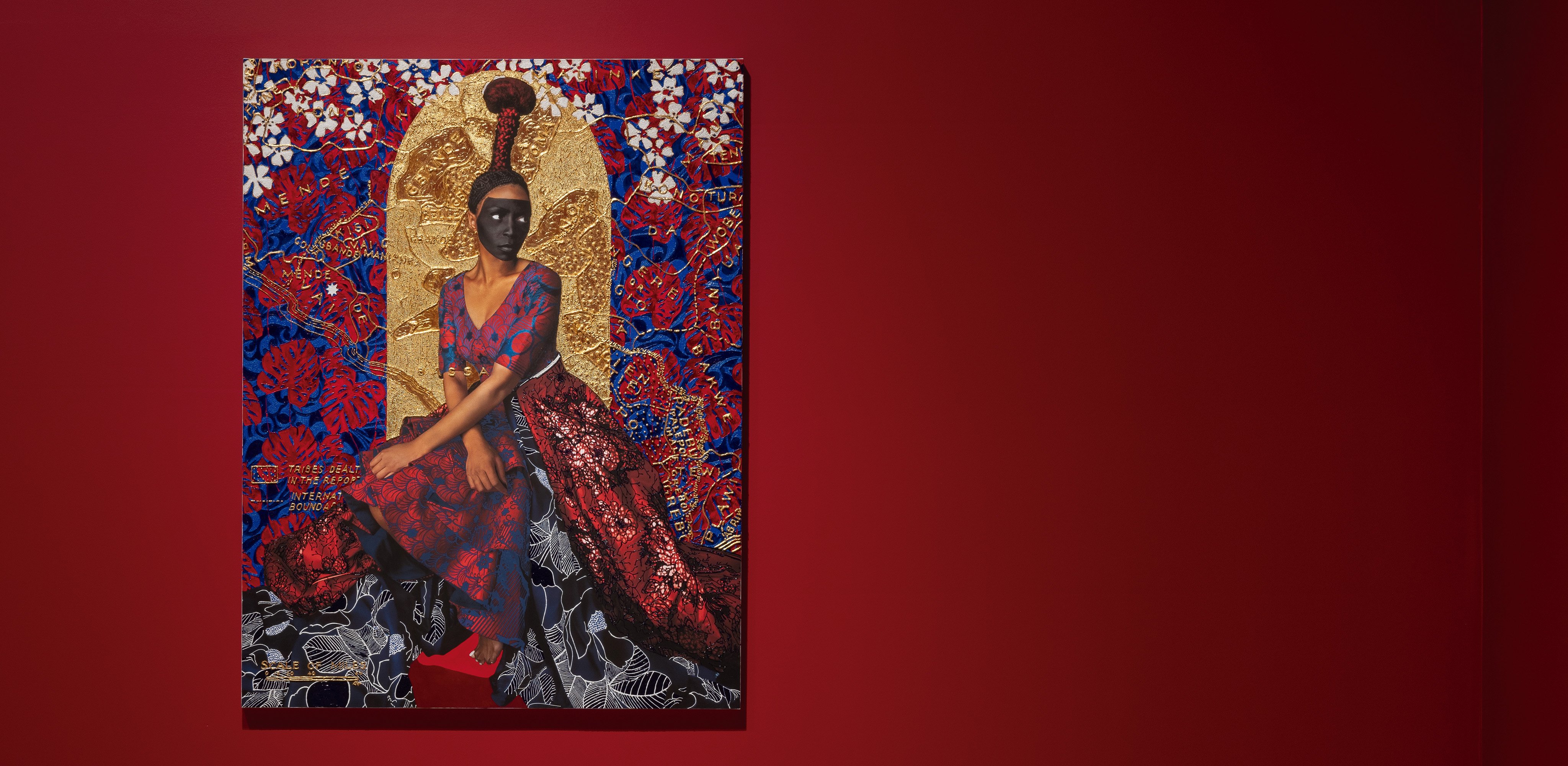
On June 29, London saw the opening of the long-awaited exhibition In the Black Fantastic, at the Hayward
Gallery. The invitation involves embarking on a journey to a fantastic
universe, where colour and fantasy are areas of creative and cultural
liberation, serving as instruments to fight against social injustice and
racism. This new way of seeing the world featured the perspectives of artists
Nick Cave, Sedrick Chisom, Ellen Gallagher, Hew Locke, Wangechi Mutu, Rashaad
Newsome, Tabita Rezaire, Cauleen Smith, Lina Iris Viktor, Kara Walker and Chris
Ofili. Directed by Ekow Eshun, the exhibition has already captured the world’s
attention, establishing itself as the UK’s first fantasy work by black artists.
It’s not just the colour that makes In the Black Fantastic one in a million. The intensity of the 11 artists comes togther in the spiritual traditions of the African people, in mythology, in science fiction, in Afrofuturism and in folklore, as vehicles for conveying various messages. But first let’s take a step back. Understanding the roots of this art project is crucial if we are to explore the fantastic world Eshun, the exhibition’s director, says that the initial inspiration came from cinema, through films such as Black Panther, Lovecraft Country and GetOut, which explore fantasy language from the African people’s perspective. In fact, these films raise profound questions about ethnicity, identity, sense of belonging and anything that avoids commoness. With this, Eshun saw a motive, an opportunity to share the same struggle with artists who do not conform to the reality in which they live, hence the digression into other parallel worlds, other realities created from artistic expressions. Let’s begin with the works of Nick Cave, conceived to represent racial violence in the United States. His art comes from the Soundsuits collection, full body suits that began to be created in 1992, when television showed the police beating of Rodney King to the world. The latest model in the collection is dedicated to George Floyd, one of the fatal victims of police violence in the USA.
A moving exhibition, held in a city that was the driving force of the slave trade
As a way of honouring these figures, Soundsuits strives for invisibility in a white dominated society. Moving on to the next two floors, we travel through the universe of 10 more artists. Some of them, namely Kara Walker, are personalities associated with Afrofuturism, a movement that emerged in 1990 in the US. It is a current that is present in some of the works in this exhibition, easily identified by the joining of science fiction, technology and fantasy, elements that explore the ancestry of the African diaspora. Elsewhere in the exhibition, highlights include Locke’s vision, with its reproductions of racist insignia, colonial medals and slave coins, similar to the perspective of Lina Viktor, who explores Liberia as the nation founded by Africans, who had been enslaved in the United States. On the top floor, the spotlight falls on Cauleen Smith’s installation, which focuses on a series of objects that are of personal value to the artist, reproduced by monitors and screens.
The references to historical events, which persist in the present, motivate unique artistic expressions here In the Black Fantastic. The interplay between the past, present and future culminates in a paradoxical complexity of feelings and emotions, a real journey of pain, vulnerability, proximity to death, revolt and, at the same time, the joy and liveliness of African culture.
A moving exhibition, held in a city that was the driving force of the slave trade and colonial ruler of African countries.
It’s not just the colour that makes In the Black Fantastic one in a million. The intensity of the 11 artists comes togther in the spiritual traditions of the African people, in mythology, in science fiction, in Afrofuturism and in folklore, as vehicles for conveying various messages. But first let’s take a step back. Understanding the roots of this art project is crucial if we are to explore the fantastic world Eshun, the exhibition’s director, says that the initial inspiration came from cinema, through films such as Black Panther, Lovecraft Country and GetOut, which explore fantasy language from the African people’s perspective. In fact, these films raise profound questions about ethnicity, identity, sense of belonging and anything that avoids commoness. With this, Eshun saw a motive, an opportunity to share the same struggle with artists who do not conform to the reality in which they live, hence the digression into other parallel worlds, other realities created from artistic expressions. Let’s begin with the works of Nick Cave, conceived to represent racial violence in the United States. His art comes from the Soundsuits collection, full body suits that began to be created in 1992, when television showed the police beating of Rodney King to the world. The latest model in the collection is dedicated to George Floyd, one of the fatal victims of police violence in the USA.
A moving exhibition, held in a city that was the driving force of the slave trade
As a way of honouring these figures, Soundsuits strives for invisibility in a white dominated society. Moving on to the next two floors, we travel through the universe of 10 more artists. Some of them, namely Kara Walker, are personalities associated with Afrofuturism, a movement that emerged in 1990 in the US. It is a current that is present in some of the works in this exhibition, easily identified by the joining of science fiction, technology and fantasy, elements that explore the ancestry of the African diaspora. Elsewhere in the exhibition, highlights include Locke’s vision, with its reproductions of racist insignia, colonial medals and slave coins, similar to the perspective of Lina Viktor, who explores Liberia as the nation founded by Africans, who had been enslaved in the United States. On the top floor, the spotlight falls on Cauleen Smith’s installation, which focuses on a series of objects that are of personal value to the artist, reproduced by monitors and screens.
The references to historical events, which persist in the present, motivate unique artistic expressions here In the Black Fantastic. The interplay between the past, present and future culminates in a paradoxical complexity of feelings and emotions, a real journey of pain, vulnerability, proximity to death, revolt and, at the same time, the joy and liveliness of African culture.
A moving exhibition, held in a city that was the driving force of the slave trade and colonial ruler of African countries.














